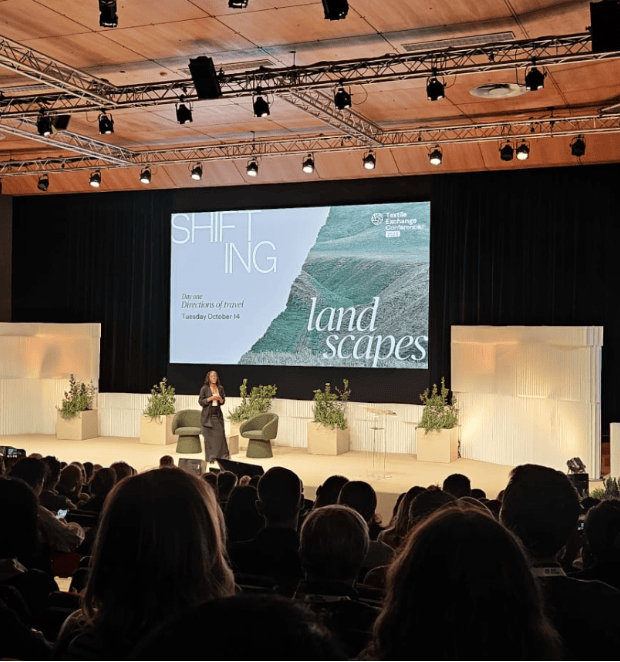Last week, our founder Marina Chahboune attended the Textile Exchange Conference 2025 in Lisbon, held from October 13 to 17 at the Lisbon Congress Centre. Under the theme “Shifting Landscapes”, the conference brought together global leadership representatives from brands, manufacturers, farmers, material innovators, academics and sustainability leaders committed to transforming the textile industry.
The conference focus is on Tier 4, which refers to the raw material production level of the supply chain including fibres, farms and feedstock processing, highlighting the critical role of upstream actors in driving traceability, climate resilience and circularity. Across three days of plenary sessions, breakout discussions, exhibition area and field visits, participants explored how changing landscapes across regions and materials can unlock new pathways toward regenerative and circular systems.
The conference was well attended and high in energy, bringing together diverse perspectives and a shared sense of urgency. One of the most striking insights from the opening plenary was how personal the issue of climate change has become, with 65% stating they feel directly affected by it. Yet, the discussion also highlighted a persistent value–action gap, as 85% of people want to live more sustainably but only 29% actually follow through. This gap shows how systemic change, rather than individual intention alone, remains essential for real impact.

Photo credit: Textile Exchange
Another interesting topic presented during the first day was the rise of “Mega Disruptors”, forces that will reshape our world in both the short and long term. From the rapid impacts of AI and technological power concentration to long-term shifts like extreme weather, resource scarcity and social polarisation, these disruptions intersect across systems, showing that change is no longer isolated but deeply interconnected. Hence the pressure to work collaboratively is heightened when we raise our awareness about the threats facing our planet & society.
A recurring theme throughout the sessions was the shift in societal paradigms. The 21st century is increasingly defined by mutualism, a move away from the institutionalism of the past and the individualism that followed, towards a model grounded in shared responsibility and collaboration. This shift is also being shaped by a major generational transfer of wealth from Boomers to Millennials, which is expected to influence consumption habits, investment priorities and sustainability agendas in the coming decade.
Textile-to-textile recycling featured prominently in the technical sessions. Experts emphasised the need to understand loss ratios in recycling processes, as material yield and fibre quality remain key barriers to scale. The traditional value system of textile sorting, which was built around reuse potential, is no longer sufficient. A new ecosystem for defining value, particularly for non-wearables and recyclable materials, is urgently needed.
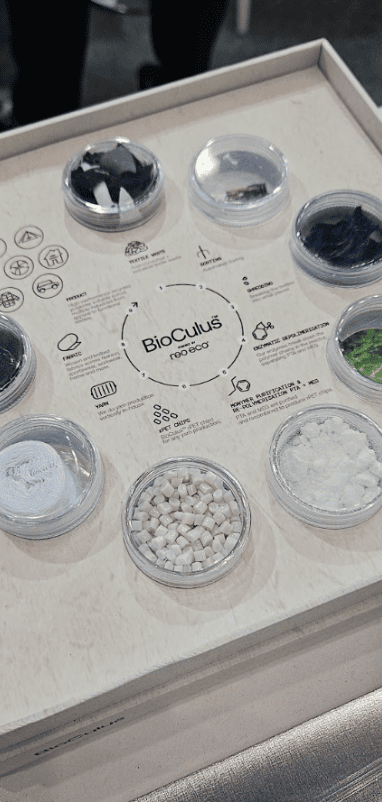
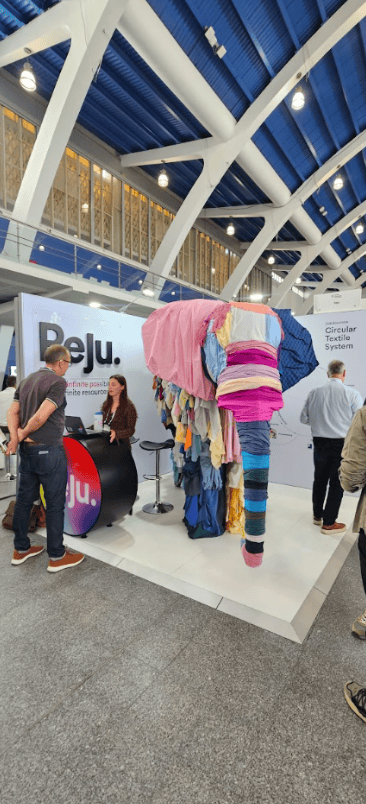
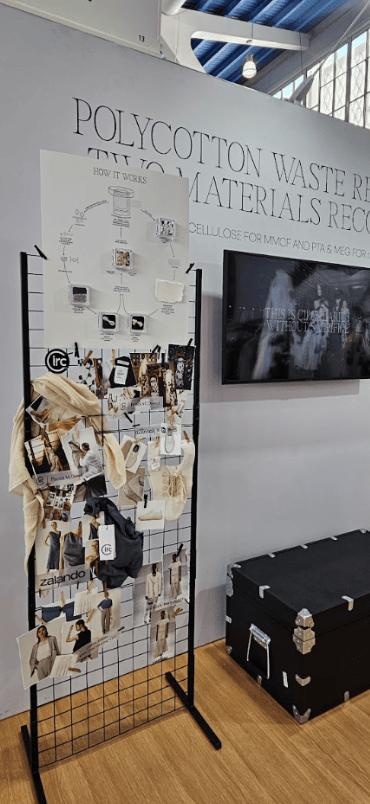
Progress in this area depends on feedstock supply agreements, stronger brand commitments and increased investment in infrastructure. While cotton and cotton-rich materials continue to dominate the recycling market, blended fabrics remain a challenge. Design for circularity was highlighted as a critical enabler, as well as readiness within the supply chain, especially in spinning, which is still limited due to quality concerns and the need of extensive R&D.
The path forward will require building on what already exists. Leveraging the current brand supply chains and technical expertise in key regions, such as polyester processing in China, can accelerate progress while ensuring that circularity is implemented within real-world production systems rather than in isolation from them.
We are grateful for the opportunity to attend this year’s Textile Exchange Conference and to connect and re-connect with partners and industry peers and to jointly continue to drive the global transition towards a circular textile future.
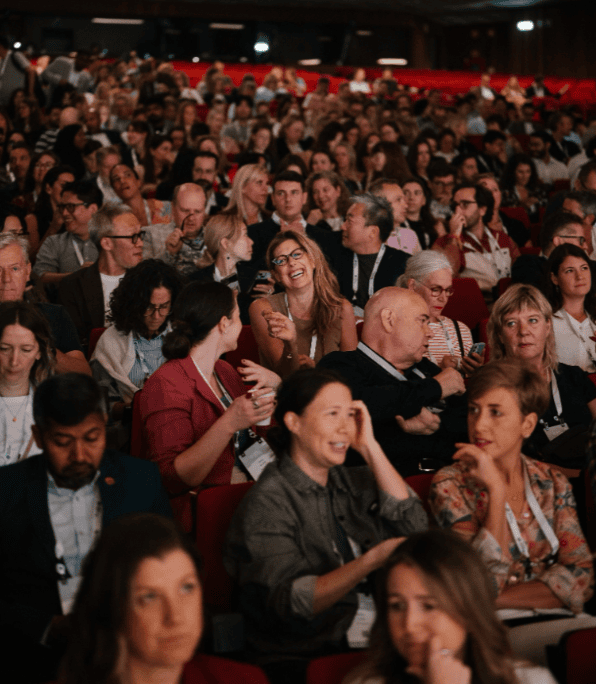
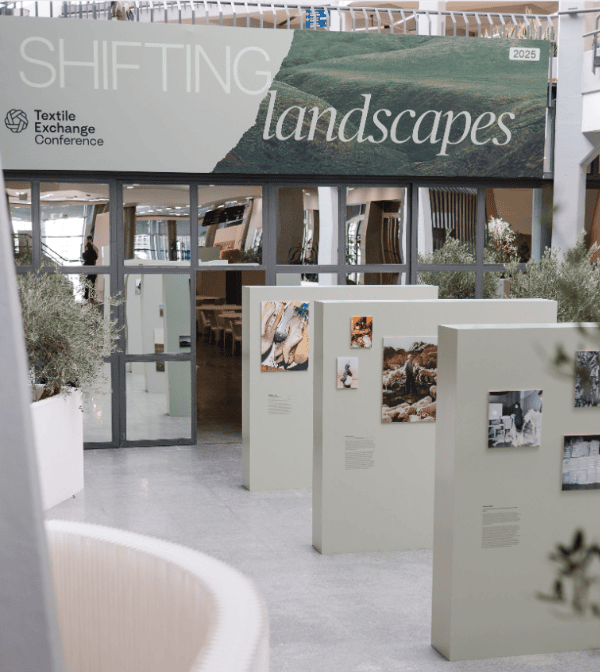
Photo credit: Textile Exchange


